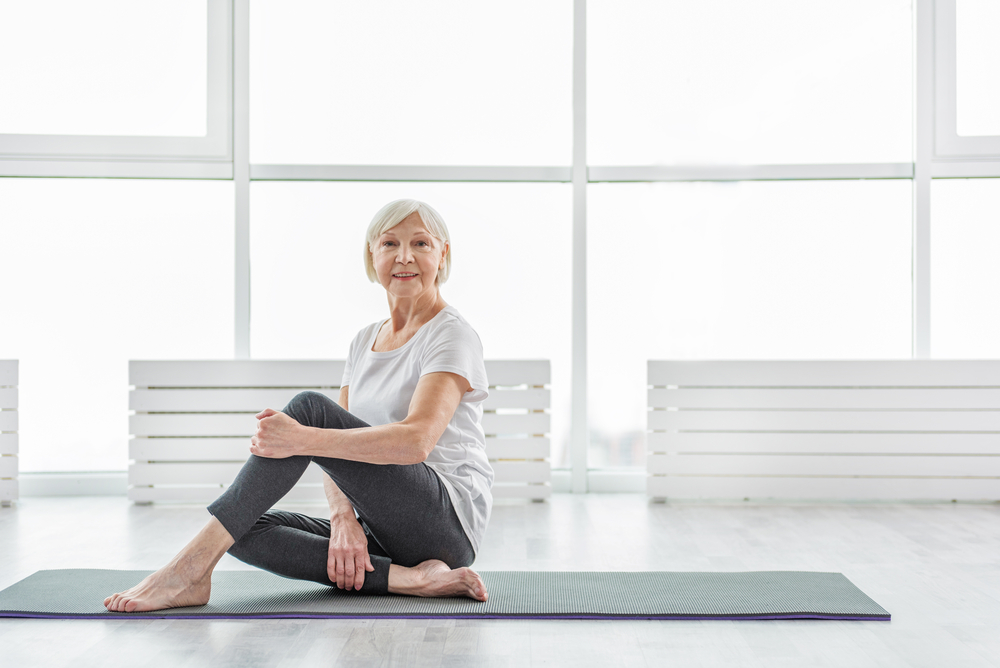Study Finds Yoga and Occupational Therapy Program Well-received by Parkinson’s Patients

A fall prevention program that combines yoga and occupational therapy was well-received by people living with Parkinson’s disease, a new study reports.
Although the study didn’t find significant effects of the program on quality of life, participants perceived improvements in several domains, including social aspects and mobility, pointing to a need for more research to examine effects over a longer period of time.
The study, “Health-related quality of life changes after the merging yoga and occupational therapy for Parkinson’s disease program: A mixed-methods study,” was published in Complementary Therapy in Clinical Practice.
Parkinson’s disease can take a toll on a person’s health-related quality of life (HRQoL), a broad term that encompasses physical, mental, emotional, and social well-being, with a particular emphasis on how an individual’s health affects these aspects of their life.
Falls can contribute to poor HRQoL among people with Parkinson’s; as such, fall prevention programs might be expected to increase HRQoL.
One such program is Merging Yoga and Occupational Therapy (MY-OT). It involves the combination of yoga (to strengthen core muscles and improve balance) and occupational therapy (to provide education about reducing fall risk). Originally developed for stroke, a modified version of MY-OT has been adapted for people with Parkinson’s.
In the new study, 17 people with Parkinson’s completed an eight-week MY-OT program, including biweekly yoga and occupational therapy sessions. The participants were predominantly male (55.6%), married (72.2%), white (100%), college graduates (44.4%), and retired (88.9%); the average age was 71.7 years. The small and relatively homogenous sample size was an acknowledged limitation of this study.
Researchers measured the participants’ HRQoL eight weeks before starting the MY-OT program, immediately before the program, and immediately after the program. HRQoL was evaluated with the Parkinson’s Disease Questionnaire-8 (PDQ-8), a validated instrument for measuring HRQoL in people with Parkinson’s.
There were no statistically significant differences in HRQoL scores before or after MY-OT, or among subgroup comparisons.
The researchers noted that, since HRQoL tends to decline over time in people with Parkinson’s, a finding showing no significant difference could still be meaningful, as it could indicate that HRQoL isn’t getting worse. But, because this study was done in a fairly short period of time and did not include a control group, there isn’t much evidence to support that conclusion based only on this study.
“Thus, seeing no decline in HRQoL scores may be important, but a follow-up assessment would be necessary to track these changes and establish a clear relationship between HRQoL changes over time,” the researchers wrote.
After MY-OT, 16 of the study participants participated in one of two focus groups, during which they were asked about their impressions of the program.
Overall, the program was well-received. Most notably, participants reported that social aspects of the program were valuable.
“I think what I liked the best was the group and seeing myself in everybody else and having that reflected back to me and seeing the kindness of the humanity of the group and what they’re going through and … that’s what was the best for me,” one participant was quoted as saying.
“You know we could have done the same kind of thing as a home study. … But having the group here makes it a lot better,” said another.
Some participants also reported that the intervention helped them feel more mobile, allowed them to participate in day-to-day activities with greater ease, and lessened pain and bodily discomfort.
“In my walking … it took me about an hour to do 6 blocks. I now go over 22 blocks in an hour,” one participant said.
“Instead of it taking you 45 [minutes] to make the bed you can make it in 15,” said another.
A few participants also reported that the intervention made communication easier, helped reduce disease-related stigma, and helped facilitate better emotional well-being. Broadly, participants reported that the intervention helped them feel less stressed and more in tune with their bodies.
“I feel like I’m in such peace … before I used to be very anxious about things and worrying. I don’t do that too much now …. I just have kind of a peace over me that, you know, I’m going to be ok,” one participant was quoted.
Overall, the researchers concluded that, “Although quantitative results showed no significant improvement during the study time, participants in the MY-OT for PD program spoke to improvements in HRQoL over the course of the intervention.” They emphasized the need for more long-term research.






